
Courting terns and vanishing wildflowers
June 2nd, 2016
On the 15th of May I went back to South March Conservation Forest with Michael. I remembered vividly where that sunny slope was that I found the Dutchman's Breeches.
(Why? Well, because it was just past a long, very narrow bridge across a wet area--the kind of bridges South March is full of, and I always look at them and wonder how the mountain bikers manage it--and as I was photographing the flowers a guy came riding down that bridge and went off it and crashed. He afterwards admitted that he had gone off it because he was watching me take photos instead of watching where he was going! He was thankfully unhurt, but the whole thing certainly impressed upon me a vivid memory of that spot.)
Anyway, I refound the slope, and was stunned to see the Dutchman's Breeches entirely gone, with scads of White Trillium in their place. They had been in full bloom nine days ago. I was able to find the plants thanks to their distinctive leaves, but all of the blossoms were replaced by pale green seed pods, with nary even a wilted petal in sight. I've never seen flowers disappear so fast!
Water bodies come and go at South March according to the whims of beavers. In roughly the middle of the conservation area is a huge beaver pond called Heron Pond. A few years ago, it dried up to a meadow, after the family of beavers apparently moved away. Now it's full and beautiful again, and West Pond is the one that's drying up.
At one outlook on Heron Pond, Michael and I stood for quite some time to enjoy the antics of three Common Terns. A female (presumably) rested on a log in the water, while a male diligently fished and brought her catch after catch. This is a courtship ritual for terns and often immediately followed by mating. A third male (again, presumably) came by and the two males got into spectacular aerial fights.
I'm curious to find out if Common Terns actually nest in the conservation area (or if they're just warming up for their arrival somewhere else.) I have so far informally tallied 54 breeding residents of South March, but I'm sure the list isn't complete yet.
Trillium, black flies and a loon
May 29th, 2016
(Okay, I didn't photograph the black flies.)
I went to Wolf Trail on the afternoon of the 11th to celebrate the recent opening of the Gatineau Parkway. In the past I've avoided the Eardley Escarpment in May and June, for fear of black flies. They were definitely out, but they weren't that bad. I suspect they had only recently emerged, since I mainly ran into them near running water, and they weren't biting much.
The next thing I discovered about Wolf Trail in May is that it is the motherload of Red Trillium. My goodness, Red Trillium everywhere! From big backlit beauties...
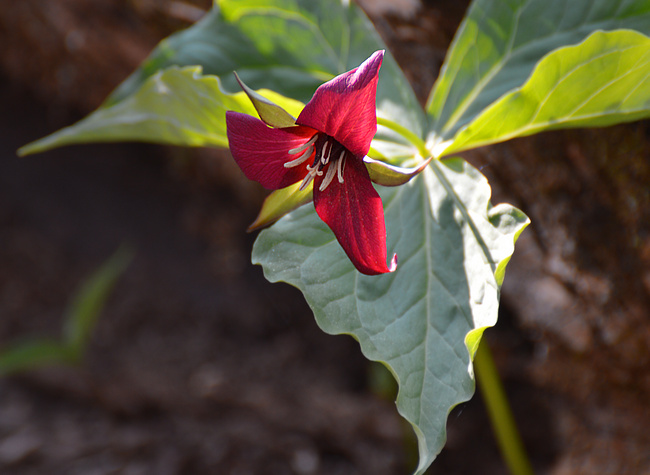
1680x1050 wallpaper
to little ones stooping in the shade.

It was an embarrassment of riches. At first I could scarcely focus on anything else, for all these gorgeous burgundy flowers everywhere I looked.
White Trillium was in bloom too.
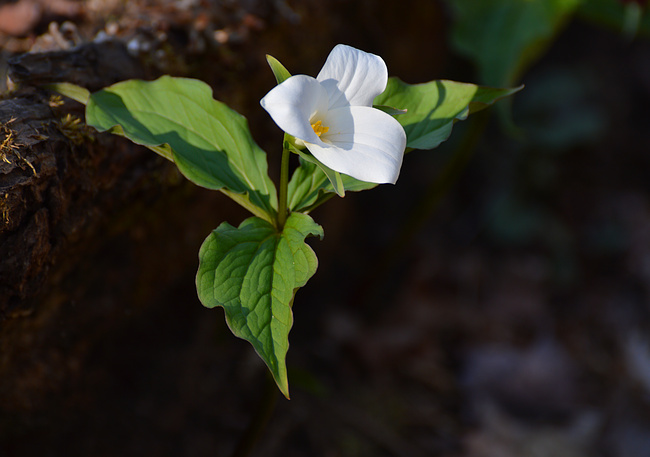
1920x1080 wallpaper
And various mystery plants were shooting up.
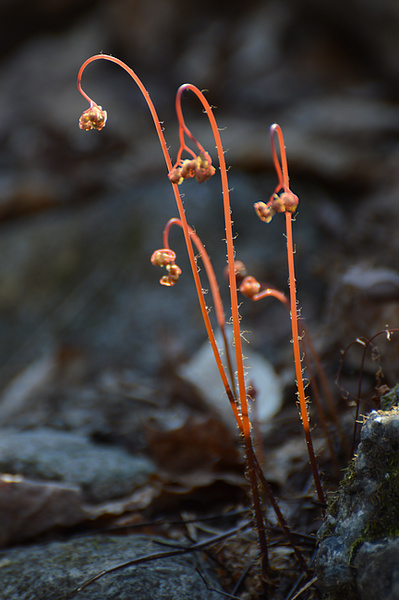
(Save for a bit of digital sharpening, that is an unaltered photo.)
When I got back to Meech Lake, I was pleasantly startled to see a loon swimming quite close to shore. (Another advantage of going to this area in May: once Blanchet Beach is open to swimmers, there aren't going to be any loons there!) I managed one photo before it noticed me, ducked under and (as loons do) resurfaced much, much further out in the lake.
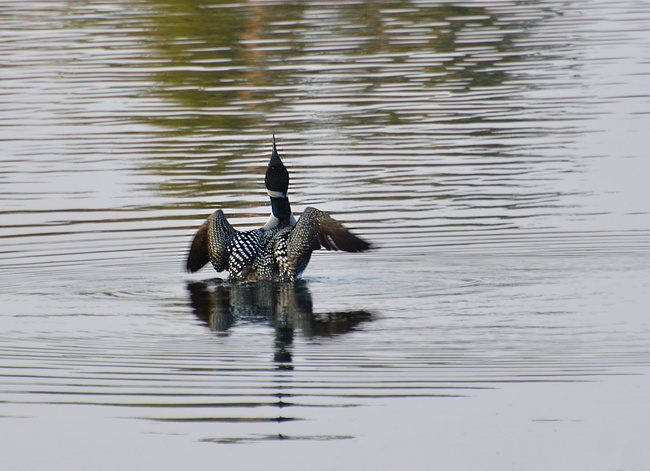
( More (White-Crowned Sparrow, Bellwort) )
Impressions of Mud Lake (part 2)
May 24th, 2016

1680x1050 wallpaper
Common Grackle. "Yes, as a matter of fact, I do own this swamp."
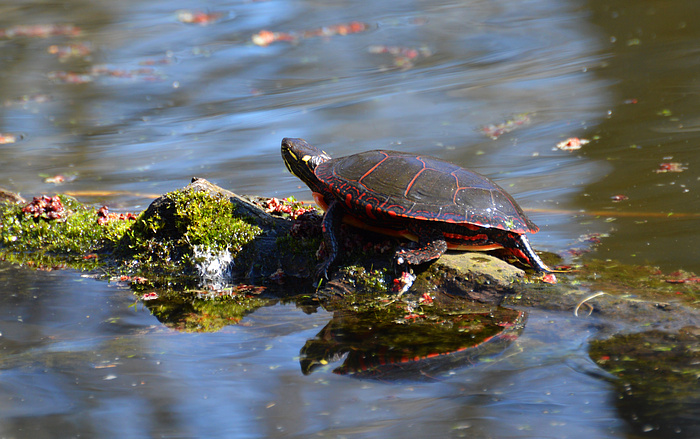
1680x1050 wallpaper
I think it's just another Painted Turtle, but I found the coloration on this one particularly striking.
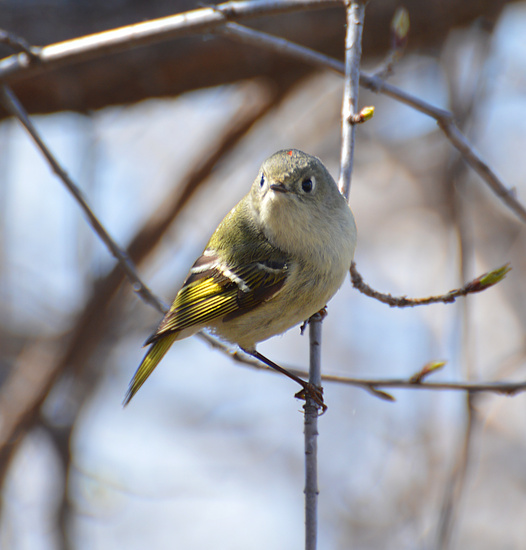
A surprisingly colorful Ruby-Crowned Kinglet, and the only migrant (i.e. non-resident of Mud Lake) in this set. I'd never seen one with as bright a shade of yellow on the wings. As usual, I only manage to capture the barest trace of the ruby crown. A Ruby-Crowned Kinglet has to erect its crown feathers to show off the red patch, something it seldom does for more than a moment at a time.

White-Breasted Nuthatch
The most interesting sighting of the day proved unphotographable (it went by too fast and too distantly, and I was standing on an unsteady beaver dam at the time!) Six or seven grackles were perched low on some fallen vegetation, looking down at the shallow water and making scolding notes that sounded almost like hissing. The object of their derision seemed to be a muskrat. As it swam along, they followed above, scolding all the way. I wondered why these grackles were so incensed by a harmless muskrat.
But when it emerged onto land, what I saw was much too lithe and sinuous to be a muskrat. It was a mink! Maybe hoping for a tasty breakfast of grackle chicks? By the time I finished fording the beaver dam, it was gone.
Impressions of Mud Lake (part 1)
May 21st, 2016
My trip to Mud Lake was meant for the photographing of spring migrants, but it was all the locals, instead, who wanted their pictures taken!

1680x1050 wallpaper
A female Red-Winged Blackbird, often mistaken for some sort of sparrow. (I blush to admit that when I saw my first back in 2007, as a novice birder, I mistook her for a waterthrush!) Look closely and you can see that she has a bit of her eponymous feature, though it's more rusty than properly red.
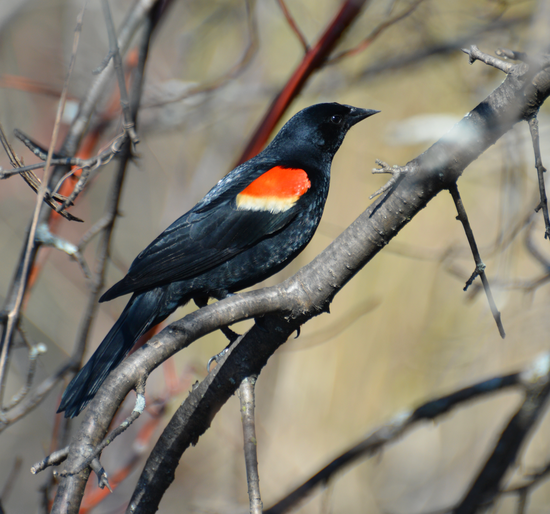
1680x1050 wallpaper
A male looks on nearby--perhaps her mate? Actually, a successful male redwing (one who has managed to secure a prime bit of habitat) can have over a dozen females nesting in his territory and raising his young.
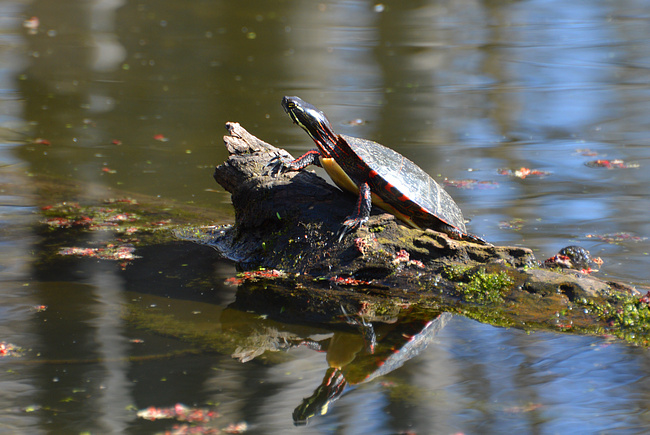
Painted Turtle, common in many ponds and marshes throughout Ottawa.
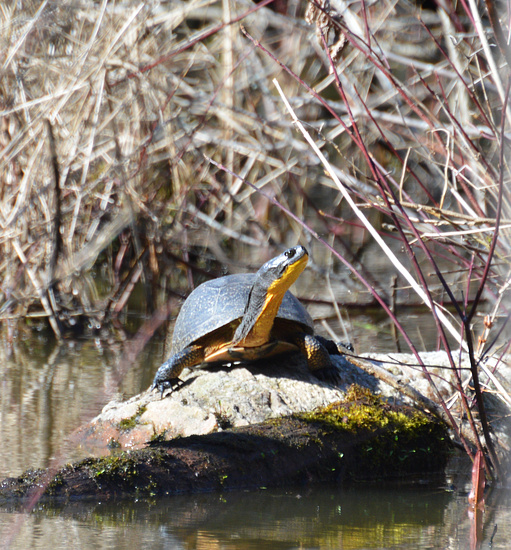
1680x1050 wallpaper
A Blanding's Turtle surveys his domain. This is a much rarer species than Painted Turtle, and in decline. (To tell them apart, note Blanding's solid yellow throat and much more convex shell. It's also larger on average.) I have seen them only in three protected areas: South March Conservation Forest, Carp Ridge, and Mud Lake. Any Blanding's Turtle sighting makes my day, as it reassures me that they still have a toehold in Ottawa's wildest wetlands.
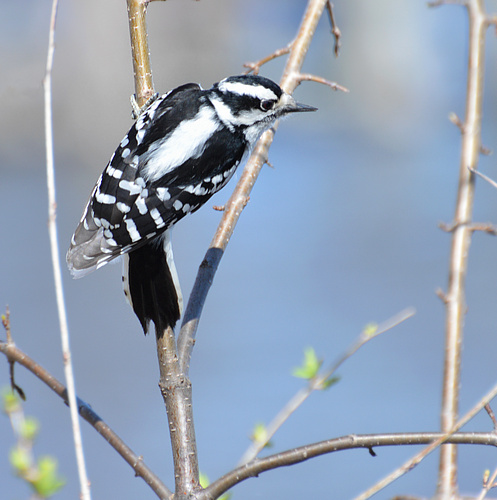
This little Downy Woodpecker had just noticed a woman holding out birdseed. A moment after I took the photo it was in her hand!
Spring Outing
May 16th, 2016
Another close encounter at South March Conservation Forest.
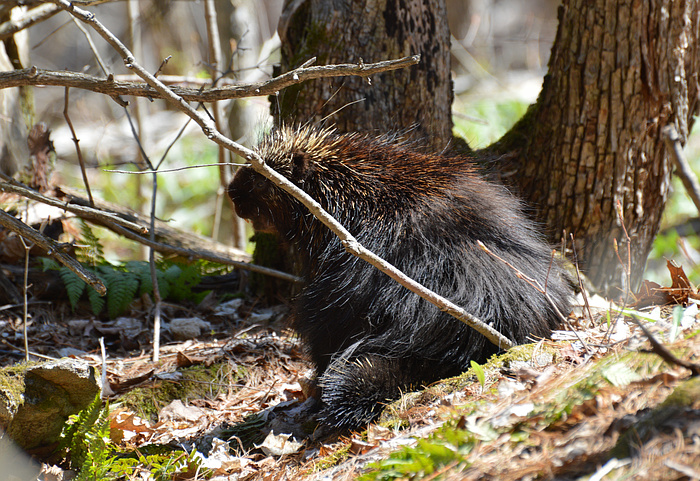
1680x1050 wallpaper
Porcupines are usually nocturnal animals that sleep in trees by day, but in early spring, they can sometimes be seen out and about, noshing on fresh buds and other vegetation. They're nearsighted, and though they supposedly have a great sense of smell, they seldom seem to notice me before I notice them. Of course, since almost no one wants to tangle with a porcupine, they can afford to be oblivious!
This one practically walked into me. By the time I took this photo, though, he knew I was there, and you can tell by the quills that he was a little tense. I left him alone after that.
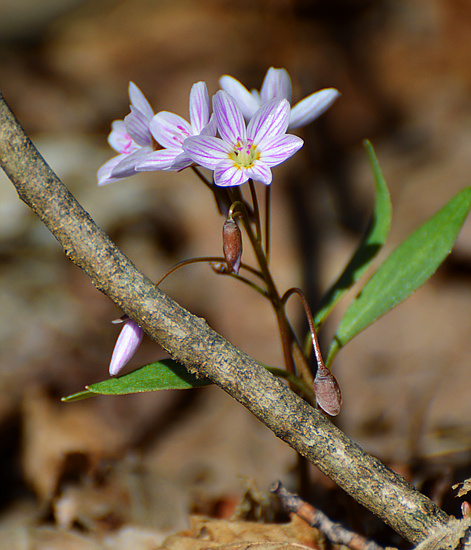
Spring Beauty (by name and by nature.)
A Festival Of Ephemerals
May 13th, 2016
Three days later, now at the east end of South March Conservation Forest, and things were coming back to life. Black-Throated Green Warblers were chanting "zoo-zee, zoo-zoo-zee" from the treetops, Least Flycatchers were chebeking, and this Rose-Breasted Grosbeak was singing his melodious song, famously described by Roger Tory Peterson as "like a robin that has taken voice lessons":
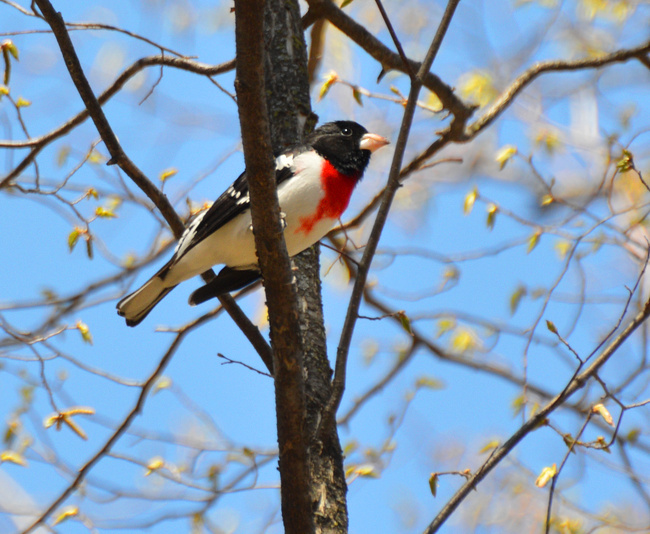
Rose-Breasted Grosbeaks are one of the characteristic breeders of South March. In fact, I don't know of anywhere else in the Ottawa area that has as many of them in summer, not even in Gatineau Park.
But the stars of the day were the spring ephemerals--those short-lived wildflowers that blossom in the woods in early spring, before the trees steal their sunlight. There is something primeval about ephemerals. They are true natives of eastern North America (unlike many of the familiar flowers that spring up on our roadsides and in our lawns), adapted to this land as it once was: covered by forest. I get excited to see them in spring, almost as much as I thrill to the return of warblers, tanagers and grosbeaks.
South March Forest was a festival of spring ephemerals that day. Trout lilies, spring beauties, bloodroot, hepatica, red trilliums, white trilliums just starting to unfurl. And this one, a wildflower I'd never seen before:
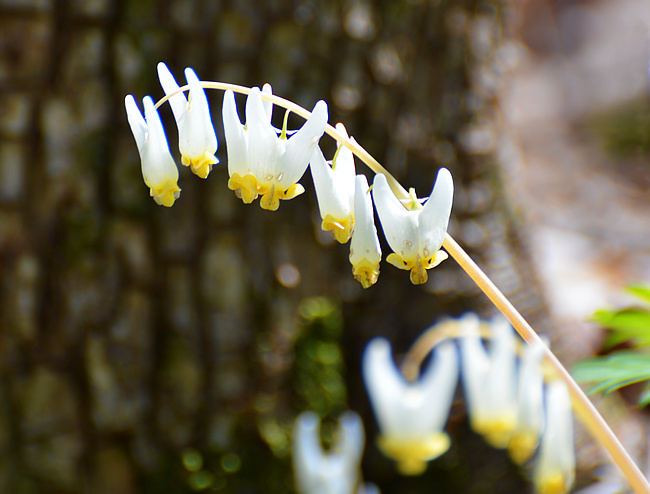
1680x1050 wallpaper
My Peterson's flower guide told me it was Dutchman's Breeches. There was just one sunny slope where I found them, growing in abundance amidst hepatica, spring beauty, and a lone red trillium. Nectaring insects were all over that slope, and the dutchman's breeches was especially popular with bumblebees, including handsome Tricolored Bumblebees. I later learned from Wikipedia that this flower is specially adapted for feeding by bumblebees, and dependent on them for pollinaton.

1680x1050 wallpaper
( More (red trillium, hepatica, trout lily) )
South March at Sunrise
May 9th, 2016
Early Tuesday morning I headed out to the west end of the South March Conservation Forest, my favorite bit of wilderness this side of the Gatineau. The wind had changed for the better (a south wind, giving spring migrants a boost), so I was hoping for some new arrivals--thrushes, tanagers, rose-breasted grosbeaks. But, even though the flood of May migration had begun in far-southern Ontario (judging by all the Ontbirds reports in my mailbox), it hadn't quite gotten here yet. My only two spring firsts were by ear: the chanted crescendo of a distant Ovenbird (a warbler I have yet to successfully photograph after eight years of trying), and the winnowing of a snipe over Huntmar Road.
It was nonetheless a beautiful morning.
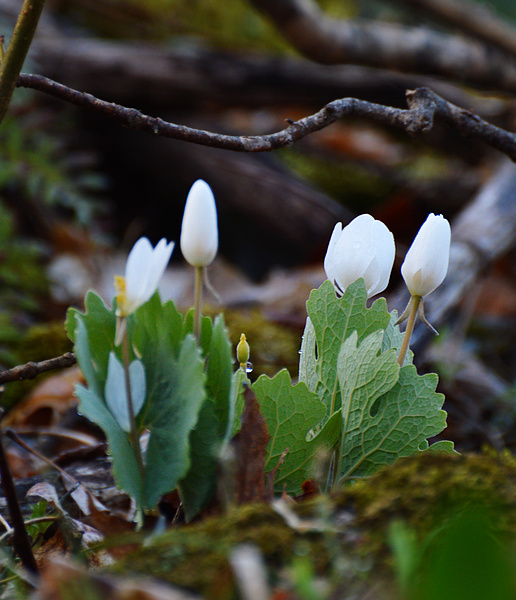
Bloodroots, still half-asleep in the early morning light. These are ephemeral wildflowers, among the first to bloom in spring, and quick to disappear. Their lurid name refers to the poisonous orange-red sap that bleeds out of the roots when cut. Native Americans once used it as a dye.
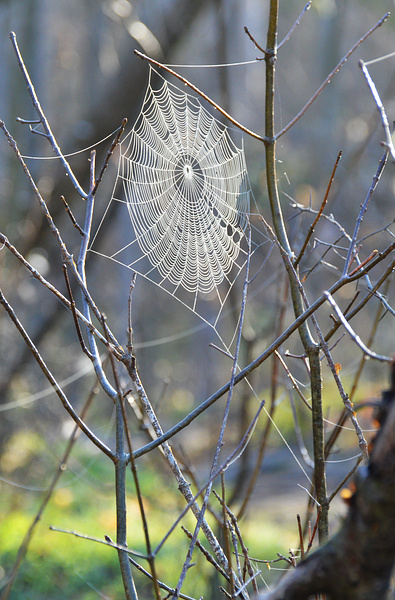
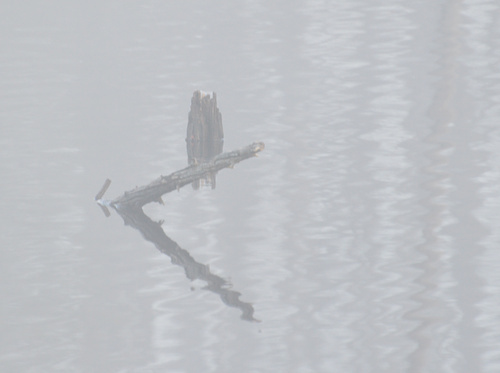
An owl perched over the beaver pond! Or...then again, maybe not. I admit it had me fooled for a moment, though.
I was back in my car when I had my final photo op of the day, as a group of three raccoons attempted a death-defying sprint across Huntmar at rush hour. I managed to roll down the window and get the camera ready just in time to capture them climbing up onto the road.
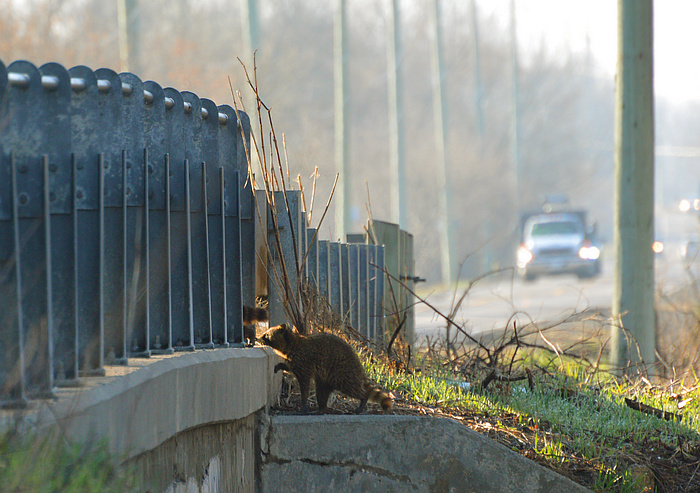
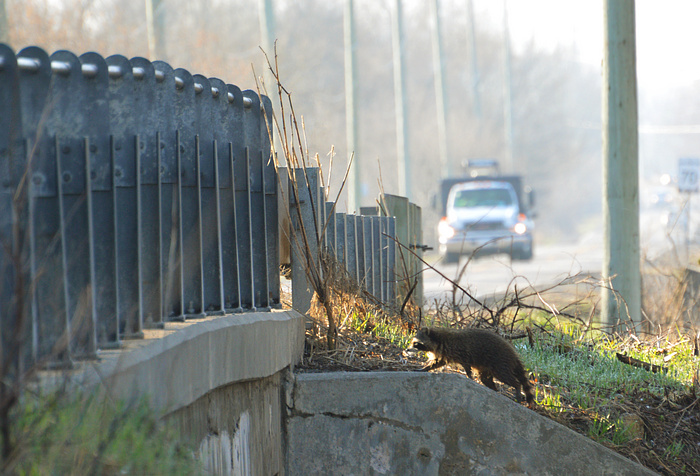
They all made it across!
Those who wish to be noticed, and those who do not
May 1st, 2016
Some photos from a weekend outing to Mud Lake (except for the Wild Turkey, which I saw along Fifth Line Road in rural Dunrobin.)

Drake Wood Duck.
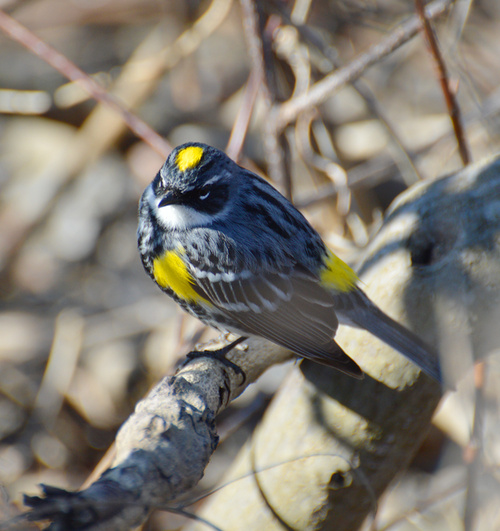
Welcome back, beautiful Yellow-Rumped Warblers!
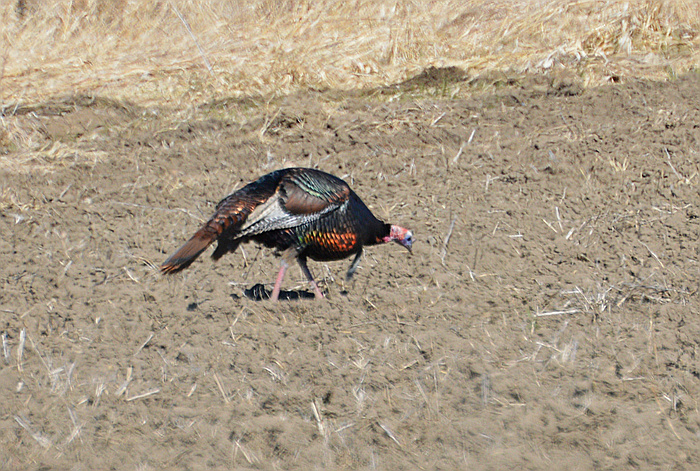
A tom Wild Turkey, decked out in his best iridescent colors for the breeding season. He had been fanning his tail for the ladies, but got shy when he noticed me watching him.
On to the "do not wish to be noticed" section!

A soundly sleeping little Eastern Screech-Owl. From a distance, he just looks like part of the tree.
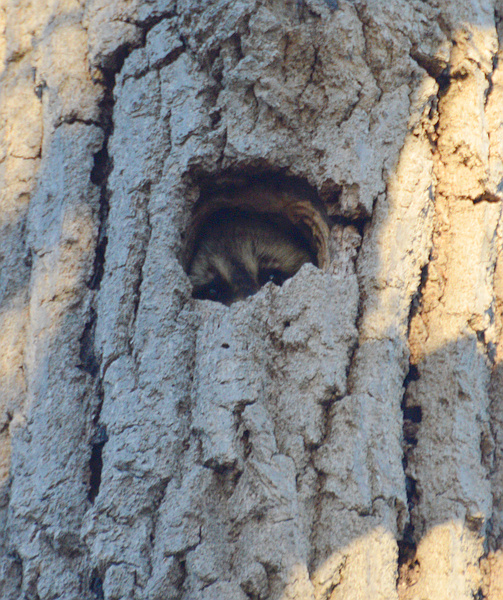
Who do you think?
A Blizzard Of Snow Geese
March 26th, 2016
Every spring and every fall, migrating Snow Geese amass in fields east of Ottawa: sometimes thousands, sometimes tens of thousands, sometimes over a hundred thousand. It's a brief window, especially in spring, and the rest of the year you'll be hard-pressed to see a single Snow Goose.
I've been wanting to capture the spectacle on camera for years. So last Wednesday I headed out to the Cobb's Creek floodplain, one of the two floodplains where waterfowl habitually mass each spring. (Directions: drive east down Russell Road approximately forever. When you see a whole lotta water and a whole lotta birds, stop.) For a space of about a week, the creek floods and the surrounding farmer's fields turn into a massive shallow lake. The resulting habitat is highly attractive to Snow Geese, and also to Northern Pintail ducks, another bird you'll be hard-pressed to see if you miss that narrow window.
The flood had already dramatically receded in the two days since I was last there. I camped out by the roadside and hoped that a raptor scare (an eagle or falcon, say) would flush the flock and maybe bring them closer to the road--or at least create more interesting photos.
I was not disappointed. Within about fifteen minutes of my arrival, the entire mass of geese rose from the water.
(Since these kinds of photos can't really be appreciated at low res, clicking on any of them will open a fullscreen version.)
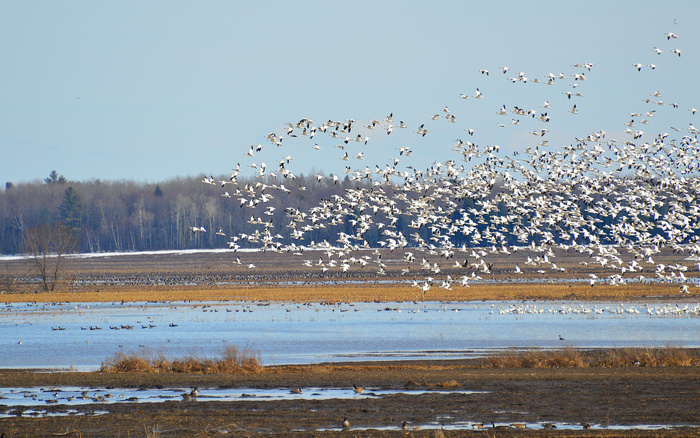

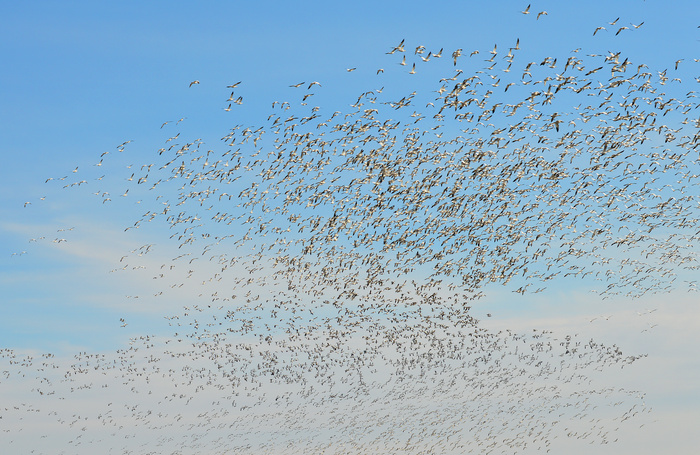
Their arc was so wide, it carried some of them nearly over my head.
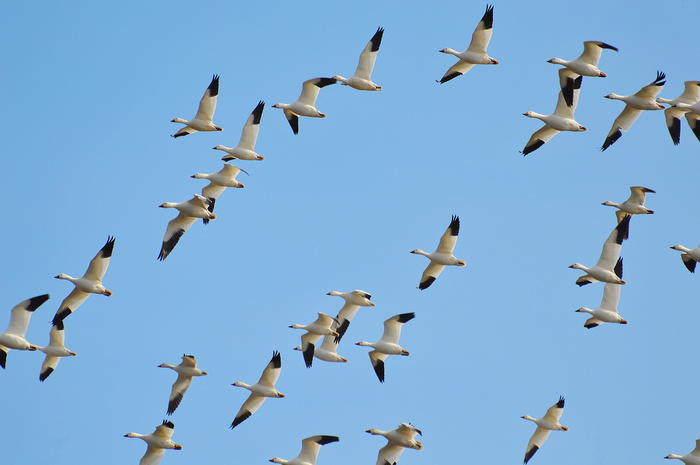
Settling back in:
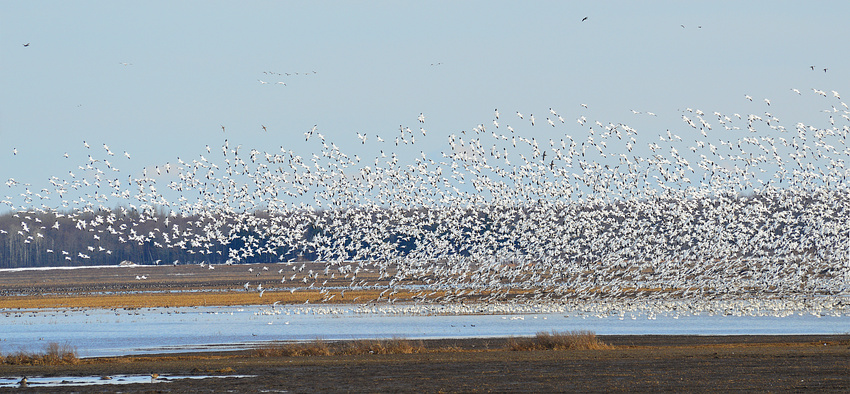
A last-minute rescue
January 6th, 2016
So how have things fared with our two western visitors? Answer: about how I expected, but with one bit of unexpected good news.
The Western Bluebird indeed disappeared after that big snowfall in late December, and has not been seen since. I like to think she finally headed south.
The Bullock's Oriole carried on in Pakenham, probably unable to build enough energy reserves to migrate. She continued to be able to eat crabapples (and orange slices offered by local residents) in her favorite tree even after the heavy snow. It was the sharp drop in temperature afterwards that really spelled the end for this neotropical migrant. Yesterday, after several days of trying to stay warm near a gas metre on someone's house, she was found emaciated and barely able to move.
The good news is people were then able to capture the oriole and take her to the Wild Bird Care Centre, where she is alive and eating well! She is expected to spend the rest of the winter in their care.
|
